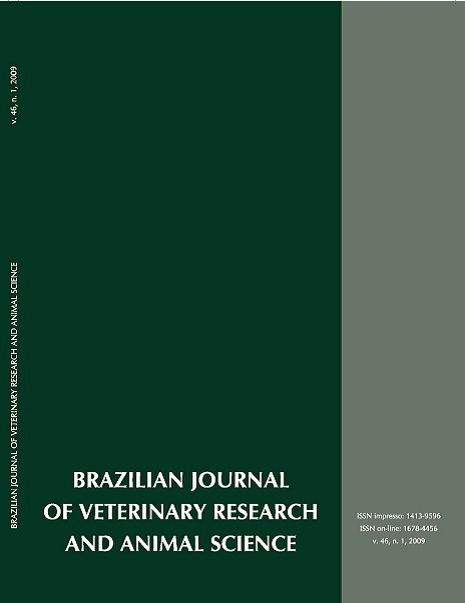Mycobacterial isolation from Felis concolor in captivity
DOI:
https://doi.org/10.11606/issn.1678-4456.bjvras.2009.26746Keywords:
Felis concolr, Nontuberculous mycobacteria, Zoological gardenAbstract
This study was made in a wildlife preserve from Argentina where a previous tuberculosis report in Felis concolor has been done. The aim was to identify mycobacterial species isolated from the orpharynx of five American lions using bacteriological and molecular biology techniques on cases with nonspecific clinical signals. Samples were collected after sedation. They were treated in order to isolate Mycobacterium. Bacteriological differentiation was made using biochemical tests. Polymerase chain reaction has been performed to detect hsp65, IS6110 and IS1081. Acid fast bacilli were present in four specimens and from them were isolated slowly growing mycobacteria. The strains were differentiated as M. gordonae in two cases and M. simiae, M. scrofulaceum and M. avium/intracellulare in one case each other. The strains were identified as M. gordonae in three cases and M. avium III or M. simiae in two by PRA. The role of feral cats in the epidemiology of nontuberculous mycobacterial diseases remains to be further investigated.Downloads
Download data is not yet available.
Downloads
Published
2009-02-01
Issue
Section
UNDEFINIED
License
The journal content is authorized under the Creative Commons BY-NC-SA license (summary of the license: https://
How to Cite
1.
Traversa MJ, Etchechoury I, Jorge MC, Schettino DM, Bernadelli A, Zumárraga M, et al. Mycobacterial isolation from Felis concolor in captivity. Braz. J. Vet. Res. Anim. Sci. [Internet]. 2009 Feb. 1 [cited 2024 Apr. 18];46(1):25-31. Available from: https://revistas.usp.br/bjvras/article/view/26746





